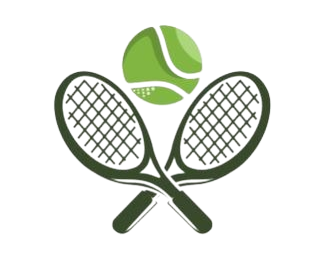Tennis Tactics: Strategies for Dominating the Court

Tennis is a game of skill, strategy, and mental acuity, where a well-thought-out approach can tip the scales in a player’s favor. This article delves into essential tennis tactics, exploring strategies that players can employ to dominate the court and gain a competitive edge against opponents.
I. Serve and Return Tactics: A. Powerful Serving: A strong and accurate serve is a formidable weapon in tennis. Players should focus on developing a reliable first serve for initiating points aggressively, while a well-placed and diverse second serve can disrupt an opponent’s rhythm and set the tone for the rally. B. Aggressive Returns: Effective return tactics involve taking control of the point from the start. Players can opt for an aggressive return, targeting the opponent’s weaknesses and putting immediate pressure on their service game.
II. Court Positioning: A. Strategic Baseline Play: Players often adopt a baseline strategy, rallying from the back of the court. Maintaining a consistent depth and angle in groundstrokes can gradually force errors from opponents and create opportunities to dictate play. B. Attacking the Net: Transitioning to the net during points can be a powerful tactic. Players with strong volleys and overhead shots can capitalize on short balls and finish points at the net, adding variety to their game and pressuring opponents.
III. Shot Selection: A. Mixing Up Shots: Varying shot selection keeps opponents guessing. Players should integrate a mix of topspin, slice, and flat shots, adapting to the situation and exploiting weaknesses in their opponent’s game. B. Drop Shots and Lobs: Well-executed drop shots can catch opponents off guard, while lobs can be effective responses to aggressive net play. Integrating these shots into the game plan adds unpredictability and disrupts an opponent’s rhythm.
IV. Exploiting Opponent Weaknesses: A. Targeting Weak Sides: Players should identify and exploit their opponent’s weaker shots or sides. Consistently directing shots to exploit vulnerabilities can force errors and create opportunities to take control of the match. B. Observing Patterns: During a match, paying attention to an opponent’s patterns and tendencies can be advantageous. Recognizing when they favor certain shots or struggle in specific situations allows players to adjust their tactics accordingly.
V. Mental Toughness and Gamesmanship: A. Maintaining Focus: Mental toughness is a crucial aspect of tennis tactics. Staying focused during challenging moments, regrouping after setbacks, and maintaining composure contribute to a player’s overall strategic approach. B. Gamesmanship: Employing gamesmanship, such as varying the pace, tempo, and rhythm of play, can disrupt an opponent’s concentration and tilt the psychological balance in favor of the tactically astute player.
VI. Adaptability and Flexibility: A. Adjusting Mid-Match: Tennis tactics should be adaptable. Players need to assess and adjust their strategies mid-match, responding to changing conditions, their own performance, and the evolving dynamics of the match. B. Utilizing Timeouts: Coaches and players can strategically use timeouts to regroup, discuss tactics, and provide valuable insights during crucial junctures of the match.
Conclusion: Success in tennis extends beyond raw skill and physical prowess; it involves a comprehensive understanding and application of effective tactics. By mastering serve and return strategies, court positioning, shot selection, exploiting weaknesses, maintaining mental toughness, and adapting on the fly, players can dominate the court and gain a strategic advantage over their opponents. As players refine their tactical acumen, they elevate their game to a level where skill and strategy converge, creating a winning formula on the tennis court.


